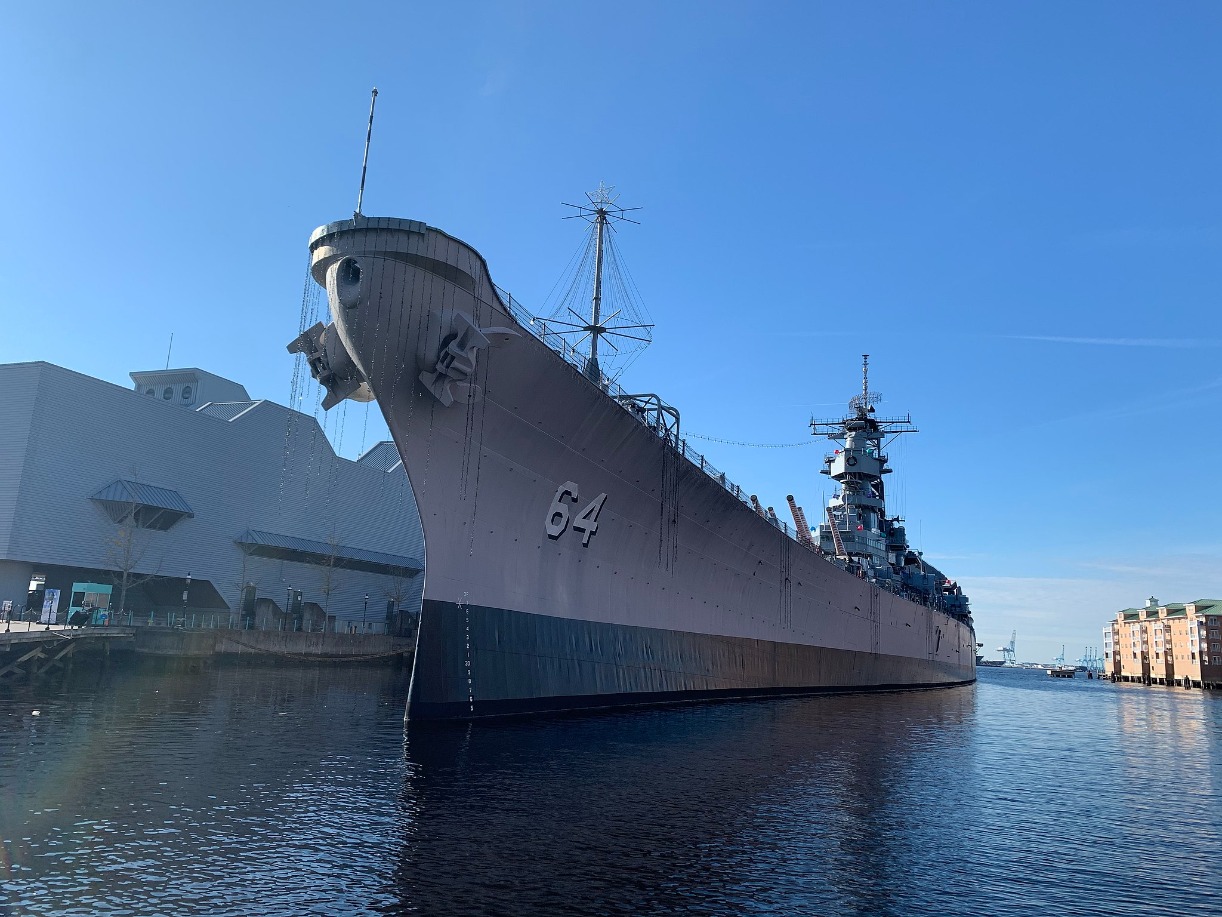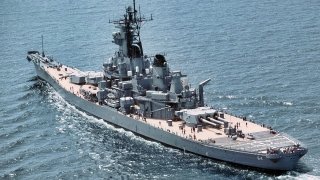"Sir, Our Battleship Just Hit Another Navy Destroyer": How Two U.S. Navy Warships Collided
On a foggy afternoon on May 6, 1956, the Iowa-class battleship USS Wisconsin collided with the USS Eaton escort destroyer 50 miles northeast of Cape Henry off the coast of Virginia.
Summary and Key Points: On May 6, 1956, the USS Wisconsin (BB-64), known as "Wisky," collided with the USS Eaton during exercises off Virginia's coast, causing significant damage to both ships.

-The Wisconsin suffered a 30-foot rip in its bow, while the Eaton lost its entire bow and had a flooded engine room.
-Quick actions by the Eaton's crew prevented further water intake. The Wisconsin was rapidly repaired in a feat called Operation Bow Transfer, where the bow of the incomplete USS Kentucky was grafted onto the Wisconsin in just 48 hours.
-The Wisconsin, now a museum ship, served again during Operation Desert Storm.
USS Wisconsin’s 1956 Collision: A Tale of Quick Repairs and Resilience
The battleship USS Wisconsin, later known to its shipmates as the “Wisky,” lived through a day of bad luck in 1956. Sailors who had experience dating back to World War II were aghast. On a foggy afternoon on May 6, the Iowa-class battleship collided with the USS Eaton escort destroyer 50 miles northeast of Cape Henry off the coast of Virginia.
What Happened That Day?
The ships were conducting exercises when there were calls of a man overboard. The ensuing maneuvering resulted in a crash that caused a 30-foot rip in the Wisconsin’s bow. The accident also tore off the Eaton’s entire bow and flooded the destroyer’s engine room when a 30-foot hole appeared in the main deck. A 5-inch gun was also torn off and it fell into the sea. The Eaton was towed by its stern back to Norfolk. Wisconsin made it back under its own power.
Quick Action From the Eaton Crew
The damage to the Eaton made the ship vulnerable to taking on more water. Bosuns Mate Second Class Bob McCarthy witnessed the collision and recounted how the crew lept into action.
“The whole front of the ship was swinging back and forth because the keel was broken. They put cables in place to hold it [her bow], the cables would stretch so they wrapped the anchor chain and welded it past the damage so they could hold the front of the ship together.”
Close Call For Sailors, Many Were Hurt
One sailor was injured on the battleship Wisconsin with a cut on his leg after being thrown off the bridge and two personnel on the Eaton were wounded. All three lived.
George Wickham, a sailor on the Eaton, shared the tale of his injury and recovery.

“I was on the USS Eaton. At the time of the collision, I was in the reefer getting vegetables for the evening meal. My injuries were to my head and face. I was handed over to the Wisconsin to their hospital. I rode to Norfolk on the Wisconsin. Upon arrival I was taken to the Portsmouth naval hospital. I was hospitalized for 30 days. I then returned to the Eaton on light duty and later returned to Portsmouth hospital for a skin graft.”
Now Time to Repair the Ships
After taking care of the wounded, both ships needed substantial work. Eaton spent at least eight months in drydock. Wisconsin was going to have a tough time too, but it was fixed in rapid fashion due to a remarkable feat of craftsmanship and engineering during the repair phase. This effort was called Operation Bow Transfer.
The Iowa-class battleship USS Kentucky was sitting at a building dock after construction had been suspended. Workers toiling around the clock took its bow and fitted it on the Wisconsin in a jaw-dropping 48 hours. Then shipyard employees fitted another 120-ton section from the Kentucky onto the Wisconsin’s bow. This work took only 16 days.
Why Was It Called the Wisky?
About that call sign “Wisky?” It had nothing to do with lackluster performance. The moniker came from the first three letters of the Wisconsin (W-I-S) combined with the first two letters of the Kentucky (K-Y). The ship was sewn together like a naval version of “Frankenstein.”

Unfortunately, the Kentucky was never completed. The Wisconsin was recommissioned in 1988 and answered the call of duty during Operation Desert Storm. It is now a museum ship in Norfolk, Virginia.
About the Author
Brent M. Eastwood, PhD, is the author of Humans, Machines, and Data: Future Trends in Warfare. He is an Emerging Threats expert and former U.S. Army Infantry officer. You can follow him on Twitter @BMEastwood.
All images are Creative Commons.


